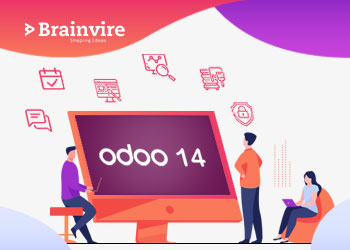Talking About Kanban and Scrum – The Ideal frameworks for Software Development through Agile Process, In the modern age of changing trends, it’s necessary to keep up your software with frequent changes and hence, development methodologies like Agile have come up to the rescue. The software industry has now adopted the Agile development approach that focuses on small and incremental releases rather than single, large release at the end. Agile software development approach has significant benefit for the developers who can stay deft and adaptable to the latest development practices and also benefit the firms by helping them save a lot of time, costs, and efforts which otherwise they would require to invest in introducing changes to a software that is rigid and unadaptable to the changes. It becomes easy to incorporate changes in the software through the Agile process. There are mainly two frameworks that are widely implemented for the Agile software development process – Scrum and Kanban.
Scrum:
In SCRUM method of agile development, the process of development occurs in short iterations called sprints. Each sprint results in a final product deliverable in an incremental manner and takes a short period of time to complete. In the process, there are mainly three crucial roles – Product Owner, Team and The Scrum Master.
While the product owner represents the client for whom the software is developed or who is responsible for maintaining the business strategy for the software, the team is the group of developers responsible for the development of the software and the SCRUM master is the person who manages the execution of the software development in Canada.
Talking About Kanban and Scrum – The Ideal frameworks for Software Development through Agile Process, The real advantage of this process is that while the developers are free to do what they are good at, the product owner still has the power of control and manages the main business strategy for software. Moreover, in order to avoid communication gaps between these two and to ensure complete efficiency in the process, there is a third person called master for the purpose. Hence, time and efforts are greatly saved in the development approach.
Kanban:
Kanban on other hand is less structured comparatively and focuses on continuous improvements thereby reducing the cycle time. One of the best advantages of this framework is that one can easily apply its principles to any already existing process. Here the process with cards that represent the tasks yet to be accomplished by the developers. When the developers complete a task they just take up the next card and start working on it. The product owner has the rights to add, remove or shuffle up the items in the backlog at any point in time.
Which is better and Why?
For small scale firms where the communication gaps are less likely to occur, opting for Kanban can be good as this process offers good agility required for the development process. It’s easy adapting changes with this method and thus it’s easy to try new things, measure its results and adapt them in your software development. Compared to this, scrum is an ideal process to implement for large companies where communication gaps are more likely to occur. Scrum is an ideal process to adopt when working on a product that customers already like or are aware of. Kanban is an ideal process for development of a brand new product that is yet to be market-fit.
Talking About Kanban and Scrum – The Ideal frameworks for Software Development through Agile Process, Brainvire Infotech is a leading software development company offering quality services for the development of software, applications, websites and much more. The company is a Microsoft certified partner and thus holds expertise in developing Microsoft applications especially the .NET application development through the most acclaimed agile development approach.
Related Articles
-
Node.js Architecture: Effectively Build Spectrum of Scalable Apps
Talking About Node.js Architecture: Effectively Build Spectrum of Scalable Apps , It doesn’t make any sense that we select ‘The Best’ development framework for our business requirement. Rather, we go
-
Benefits of Running Multiple Brands on One Odoo Solution
Many startup founders infer that at one point, they need new ventures. They start thinking of new business ideas. However, building different businesses under one roof is common these days.
-
What does the Newest Version of Odoo 14 Offer
Odoo releases a new version every year, and this year being pandemic-ridden, as we all know the version roll-out was an online event. Right after the launch of Odoo 13



